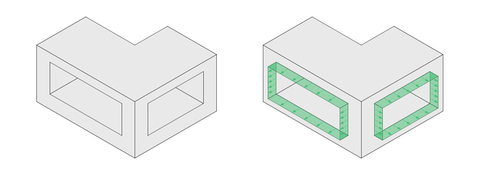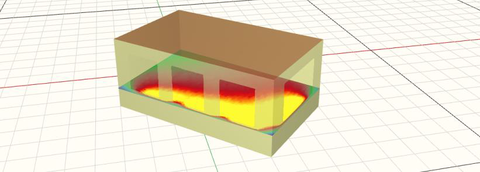Diploma thesis Jessica Donau (Architecture)
Daylight simulation - Investigations into the integration into a thermal building simulation platform & development of an evaluation methodology
Tageslichtsimulation - Untersuchungen zur Einbindung in eine thermische Gebäude-simulationsplattform & Entwicklung einer Auswertungsmethodik
The aim of this work is to develop a methodology for the integration and use of Radiance, a daylight simulation software, in the VICUS building simulation environment. This methodology should make it possible to efficiently calculate the characteristic values required to evaluate the daylight supply and to present the results in a format suitable for building simulation. Attention must be paid to the practicability and accessibility of the solution, which ensures the usability of isolated engineering solutions.
In order to carry out the daylight assessment, basic workflow research is first carried out. Based on this, the geometric parameters of the rooms under consideration and the surface characteristics, such as roughness and specular gloss, are precisely recorded. For this purpose, the usability of existing 3D models is checked. In addition, point lists are to be created for room recording. In addition to the geometry, boundary conditions such as sky conditions and environmental factors must also be taken into account.
The daylight simulations are then carried out. The outputs are saved in suitable data structures and temporary files. In order to enable a detailed analysis based on DIN 17037, the simulation results are divided up in such a way that they can be evaluated for individual rooms.
To visualize the results, a concept is developed that enables the representation in the form of fictitious horizontal planes (so-called slices) within the software. The simulation results are visualized in such a way that an intuitive interpretation of the calculations is supported.
Another important part of the work is the creation of an automatically generated report that clearly documents the input data, framework conditions and results of the simulation. It should also provide a context for the building under consideration.
A central aim of the methodology is to make the daylight assessment scalable so that all rooms in a building can be analyzed in a single simulation run. This significantly reduces the time required compared to manual processing of individual rooms. To make this procedure possible, the processes required for simulation are automated as far as possible using algorithms.
Finally, the methodology is applied to an example building with several rooms. A short example report will be produced in the same way as the procedure described above. This procedure makes it possible to check the practicability and evaluate the functionality and ease of use of the algorithm developed.
Download
Supervision
The thesis was supervised by Dipl.-Ing. Dirk Weiß
 © Dirk Weiß
© Dirk Weiß
Research assistant
NameDipl.-Ing. Dirk Weiss
Send encrypted email via the SecureMail portal (for TUD external users only).



